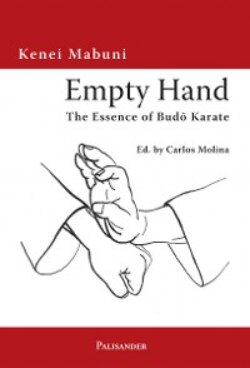Читать книгу Empty Hand - Kenei Mabuni - Страница 20
Shaolin Kempō – the Fighting Techniques of the Warrior Monks
ОглавлениеThe Shaolin-Kempō was created in the Chinese Shaolin monastery that was built in 495 (late Wei period) by order of the emperor Xiào Wén (471-499) for the Zen Buddhist priest Ba Tuo, who had come from India. The monastery is placed in the Honan province south of the Yellow River at the foot of the Songshan mountains. That is why it was also named Songshan Shaolin. It became famous because Bodhidharma19 (Japanese: Daruma), who became the founder of Zen Buddhism in China, stayed there and introduced zazen20. This might be the reason why he was – probably by mistake – considered to be the founder of the temple and the father of kempō, too.
Fighting techniques were developed particularly in the monasteries because they owned rich treasures of art and other property that the monks had to defend in this country that was ceaselessly stricken by unrest and war. The term Shaolin kempō includes all techniques that were invented in the monastery itself or came from the surrounding region. Some of them got lost in the course of time, such as the “smashing fist” (tsūhai ken), the “animated fist” (shin i ken) or the “cosmic fist” (rikugō ken).
In the Shaolin monasteries the monks were divided into prayer monks who where specialized in religious studies and warrior monks who mainly practiced fighting techniques. Those to become warrior monks had their hair shaved and wore monks’ habit immediately after entering the monastery. They spent their monastic life mostly with martial exercise rather than with Buddhist studies. The present-day Japanese style of Shaolin kempō (called Shōrinji kempō) practiced as a religious exercise is a historically new phenomenon that appeared after World War II. It was founded by Master Sō Dōshin (1911-1980).
Incidentally, since the Ming period the Shaolin monks were famous rather because of their staff fighting, kompō21 or bōjutsu, than because of their fist-fighting techniques. The Fukien kempō was developed in the Fukien and Kanton provinces in southern China. This martial art, too, is said to originate from a Shaolin monastery – not the Songshan Shaolin but another one built later in the Fukien province.
The Fukien Shaolin temple does not exist anymore. Possible remains were found at different places. That is why its location could not be determined until today. Because the Songshan Shaolin monastery was located north to the Yangtze River and the Fukien Shaolin monastery south to it, their respective martial arts were also referred to as northern and southern Shaolin or northern and southern kempō.
As in other countries, there were times when certain religions were supported and times when they were suppressed by the rulers. So the Shaolin temple, too, experienced times of promotion and prosperity and times of suppression and destruction. There might have been monks who practiced in both temples or others who had to flee the Shaolin monasteries and found shelter in other temples were they shared their knowledge and fighting experience with their hosts. It can be supposed that their knowledge and abilities were spread even among the common people. Chinese distinguished between the “monastery or house” kempō of the monks and the “outsiders” kempō of the commoners. The taijiquan is an example of the latter.
That is how present-day Chinese kempō developed in a long historical process out of different schools and styles of fighting without weapons which influenced each other. But there is no doubt that Chinese heroism in general was inspired by the monks of the two Shaolin monasteries. Like the monks of the Japanese Hieizan monastery at the end of the medieval times they took up arms and intervened in the secular world.
So did Minamoto no Yoshitsune and Musashi Bō Benkei at the end of the Heian period (794-1185) in Japan. Yoshitsune, who as a child was called Ushiwaka-maru, lived in the Kurama monastery north of the capital Kyōto. He studied esoteric Buddhist teachings (mikkyō)22,and started to practice fighting techniques. He was said to have been taught martial arts by the long-nosed mountain spirit of Kurama called Dai Tengu23. To strengthen his body he walked every day from the Kurama mountains to the center of the capital. Once he encountered the fearsome warrior monk Benkei on the Gojō bridge of Kyōto. In a great fight he achieved a victory over him.24 This episode is widely known in Japan because it is part of a famous kabuki25 theater play.
